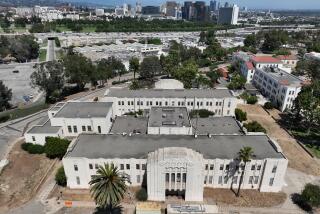“A real ‘Nancy Nurse’ type. She’s got her emotions locked down tight.”
At a small get-together for Vietnam veterans in a spacious house in Woodland Hills, somebody was telling a war story about a little boy the enemy wired as a human bomb and sent among them, and how a friend was hurt when the kid went off.
“Wait a minute,” a companion interrupted, turning to a listener on the couch.
“Steve, this is really bothering you, isn’t it?”
“Yeah, it is. A lot. I think I’ll go for a walk.”
Steve, a former Navy aviation observer who spent 22 months in Vietnam, stood up. He shook off their concern.
“Hey, I’m a counselor for this stuff, remember? I’ll go practice what I preach. I’ll be just fine.”
The door closed behind him, and then it was just the ladies.
Steve had been the only male vet in the room.
The group of women Vietnam vets had gotten together over chocolate coconut cake and coffee shortly before Memorial Day to share memories of their bloody youths, draw pride from their emotional scars and talk about what they want now in return.
Women who served in Vietnam are mounting a campaign to add a statue of a woman to the Vietnam Veterans Memorial in Washington. The coffee klatch was part of an organizing and lobbying effort to round up women veterans and generate public support.
They have won some rounds in Washington and lost others. One official argued that if “sub-units” such as women are going to get individual statues, eventually there will be a statue of a dog to honor the K-9 Corps.
The women hope to duplicate the success of the effort that added statues of three infantrymen to the abstract black wall that lists the Vietnam dead. They already have a statue designed, showing an Army nurse in rumpled fatigues, cradling a helmet in her arms like a child.
The women want her to stand looking at the statues of the infantrymen from some distance away.
Her jaw is set, mouth determined and unsmiling. But her eyes wince in sympathy.
The campaign organizers say the statue would represent all women who took part in the war, in any capacity, a group they estimate at about 10,000--eight of them listed on the wall. But most of the military women were nurses, and it is nurses who are running the statue drive.
All the women in the living room were nurses.
Some hidden antenna picked up on Steve’s unspoken discomfort, reviving a response established in emergency rooms and recovery wards two decades ago.
As one remarked later, “After a while, you had to adjust to the fact that you couldn’t keep them from getting hurt, and maybe all you could do was try to comfort them while they died of whatever was wrong with them when they came in. But you tried like hell to prevent anything from hurting them anymore while they were with you.”
So they decided that the slide show should be postponed until Steve left for good.
The slides were one of the attractions of the evening. Although, as Ellie Vargas, the Southern California coordinator of the Vietnam Women’s Memorial Project warned an observer: “Nurses get used to gross stuff, and military nurses get used to really gross stuff, so be warned.”
The slides were taken at the 71st Evac Hospital in Pleiku in 1969 by Jan Wyatt, a tall woman with unprintable traces of the Army in her vocabulary. Now administrative nurse at Ventura County Hospital, Wyatt is also technical adviser for a TV series about women in Vietnam called “China Beach.” Her colleagues gave it mixed reviews, but they liked one character. “A real ‘Nancy Nurse’ type,” Wyatt agreed. “She’s got her emotions locked down tight.”
That was the ideal, “locked down tight,” professionalism as psychic armor.
Some of her slides pictures were the usual amateur snapshots of miles of pale green jungle, taken by an excited newcomer from the plane that brought her.
Some showed rocket craters next to the room where she slept.
“At that age, you figure you’re immortal,” she laughed. “You just don’t believe it’s going to happen to you, even when all day long you see people it did happen to.”
Some show gangs of young women in shorts and T-shirts, mugging cheerfully during impromptu parties on the barracks steps, holding cans of beer.
“We’d work all night, and we’d be out there getting blotto at 9 a.m. and fall into bed at noon and be back at work at 7 p.m.,” Wyatt said.
And some show patients as they arrived off the evacuation helicopters. A pilot hit by a rocket looked like a pile of scraps from a slaughterhouse with a head at one end and two feet at the other. Another soldier’s forearm bone extended flesh-less from his elbow, clean and smooth as a broomstick, ending in a jagged point.
The photos would have drawn gasps in almost any other crowd. To the women, this was business as usual, what they did day after day before the sunrise beer party. The light conversation never faltered. They sipped coffee, locked down tight.
Their emotions don’t surface in public at the sight of gore, or they would have been retired as useless long ago. But they do get emotional about the statue, the goal of a large and sophisticated lobbying effort.
The women are determined that among the 110 statues of military men in Washington, by their count, there will be one of a woman, something that will say uniquely to them, as one of the participants said during the evening: “Thanks for what you did. Welcome home.”
More to Read
Sign up for Essential California
The most important California stories and recommendations in your inbox every morning.
You may occasionally receive promotional content from the Los Angeles Times.










